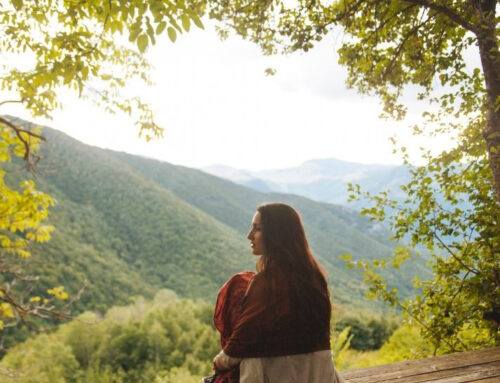 I had an interesting conversation with a neighbor the other day who told me visiting Chile and Argentina had always been on her bucket list. Both being avid gardeners, we talked about how exciting it would be to see some of the native plants and gardens of that region. I asked her when she was thinking of going.
I had an interesting conversation with a neighbor the other day who told me visiting Chile and Argentina had always been on her bucket list. Both being avid gardeners, we talked about how exciting it would be to see some of the native plants and gardens of that region. I asked her when she was thinking of going.
“Probably April of next year. I would love to see the Spring flowers there.
Puzzled, I asked, “Do you mean you’re thinking of going this Fall? That’s when spring flowers will be in bloom there.”
“Right, of course.” My neighbor responded warily, looking at me as if I had just sprouted another head. Desperately wanting to change the direction of the conversation, she continued, “I’m sure the gardens will be magnificent, but it’s really the art and culture I’m most interested to see.” Admitting I was quite naïve about South American art, I allowed my neighbor to educate me on the nuances of Pre-Columbia paintings.
Perhaps she was having an off day. Perhaps she was exhausted after caring for two very active preschoolers, or maybe, she was like so many of us who often forget we live on a very large planet; a planet so large our northern and southern hemispheres experience seasonal reversal because the earth’s spin axis is tilted relative to its orbital plane.
Sometimes, I think it’s good to take a break from gardening in our little corner of the world, and consider what gardeners who live thousands of mile away are doing in their gardens.
Here are some things to consider:
Hemispheric Reversal of Seasons: The Southern Hemisphere experiences seasons opposite to those in the Northern Hemisphere. Summer is from December to February, autumn from March to May, winter from June to August, and spring from September to November.
Climate Zones: Just as in the Northern Hemisphere, the Southern Hemisphere includes a range of climate zones, from tropical to temperate to arid, which significantly impact gardening practices.
Planting and Harvesting Times for Gardens in the Southern Hemisphere
Spring (September – November):
Ideal for Planting: Many vegetables and flowers. Popular choices include tomatoes, peppers, cucumbers, marigolds, and petunias.
Tasks: Soil preparation, planting seeds and seedlings, and setting up irrigation systems.
Summer (December – February):
Harvesting: Many spring-planted crops, such as tomatoes, cucumbers, and beans.
Tasks: Regular watering, weeding, mulching, and pest control.
Autumn (March – May):
Planting: Cool-season crops like broccoli, cauliflower, spinach, and lettuce.
Tasks: Harvesting summer crops, preparing beds for winter, and planting cover crops.
Winter (June – August):
Maintenance: Protecting plants from frost, managing soil health, and pruning dormant plants.
Planting: Hardy vegetables like garlic, onions, and winter greens.
Climate Zones and Suitable Plants for the Southern Hemisphere
Tropical Zones
- Regions: Northern parts of Australia, much of South America, parts of Africa.
- Growing Conditions: High temperatures year-round, significant rainfall.
- Suitable Plants: Bananas, pineapples, papayas, mangos, and many tropical flowers such as hibiscus and bougainvillea.
- Tips: Ensure good drainage to prevent root rot and use mulching to retain moisture and suppress weeds.
Temperate Zones
- Regions: Southern Australia, New Zealand, southern parts of South America.
- Growing Conditions: Four distinct seasons, with moderate rainfall.
- Suitable Plants: A wide variety of fruits and vegetables including apples, pears, berries, carrots, and lettuce.
- Tips: Utilize greenhouses or cloches to extend the growing season and protect tender plants from frost.
Arid Zones
- Regions: Central Australia, parts of South Africa, inland regions of South America.
- Growing Conditions: Low rainfall, high temperatures, often poor soil.
- Suitable Plants: Drought-resistant species like succulents, cacti, olives, and certain herbs like rosemary and thyme.
- Tips: Implement xeriscaping principles, use drip irrigation, and select plants that thrive in low-water conditions.
And yes, it does snow in the Southern Hemisphere in July, especially in regions that experience winter during this time. Just as with colder seasons in the Northern Hemisphere, many gardeners in the Southern Hemisphere are now caring for their winter gardens. In the Southern Hemisphere, here are some key areas where snow is common in July:
South America
- Andes Mountains: Snowfall is common in the Andes, especially in countries like Chile and Argentina. Ski resorts in these regions, such as Portillo and Valle Nevado in Chile, and Cerro Catedral and Las Leñas in Argentina, attract many visitors during the winter months.
- Patagonia: Southern parts of Argentina and Chile, including Patagonia, also experience snowfall.
Australia
- Australian Alps: This mountain range spans southeastern Australia and includes popular ski destinations such as Thredbo, Perisher, and Mount Hotham.
- Tasmania: The higher elevations of Tasmania, such as Mount Wellington, also see snowfall.
New Zealand
- Southern Alps: This mountain range on the South Island is known for its ski resorts, such as Queenstown, Wanaka, and Mount Hutt.
- North Island: Mount Ruapehu, an active volcano, also has ski areas and experiences snowfall in winter.
Africa
- South Africa: Snow is rare but can occur in the high-altitude regions of the Drakensberg Mountains and Lesotho.
Antarctica
- Entire Continent: Being the coldest place on Earth, Antarctica is covered in ice and snow year-round, including July.
I hope you are enjoying your seasonal garden wherever you live.








